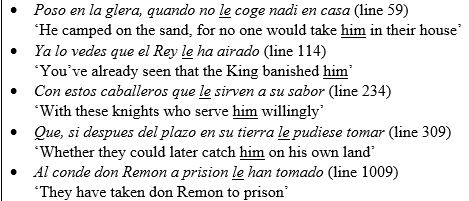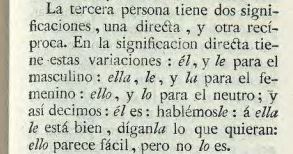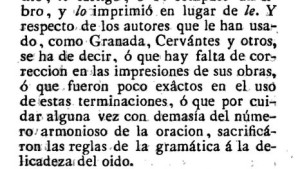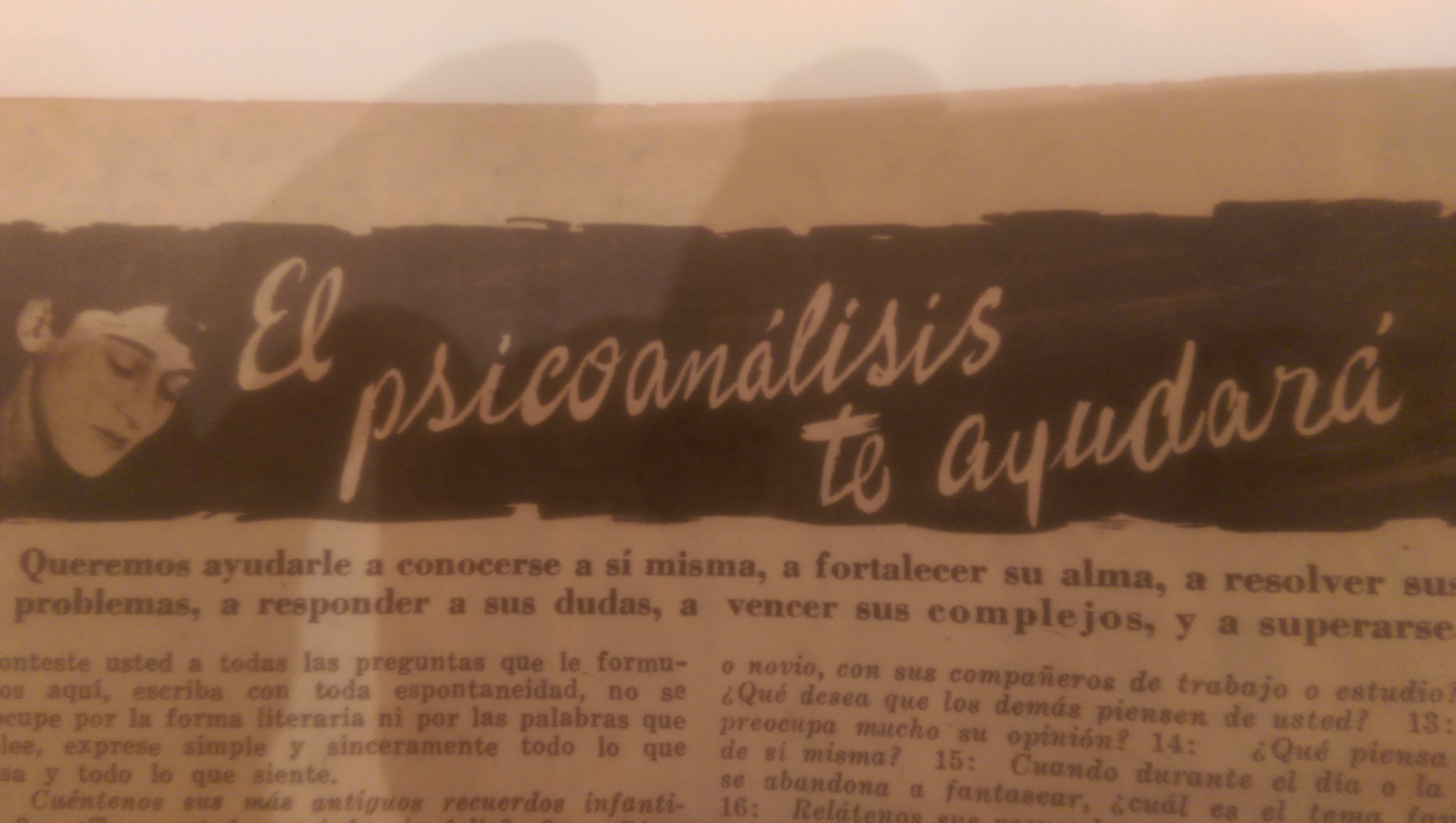Look for more red ‘ink’ below to understand the “ain’t” in this post’s title.
My Spanish students often have difficulty telling the difference between direct and indirect objects. They say things like Quiero conocerle ‘I want to meet him‘ (instead of Quiero conocerlo) or, conversely, Lo di el libro ‘I gave the book to him‘ instead of Le di el libro. I inevitably have to assign students helpful activities like this one to attune their ‘ear’ to this often subtle difference.
The first of these ‘errors’ (conocerle) is ironic because for many Spanish speakers it is perfectly normal Spanish. Leísmo — the substitution of le instead of lo for masculine direct objects that are human — is a widespread Spanish pattern, especially in Spain. In fact, leísmo is a long-established object pronoun pattern, rather than a recent development (as many native speakers assume). In this regard leísmo is akin to English ain’t, which was a widely accepted expression of negation (beginning in the 1700s) before it became stigmatized. (See David Crystal’s The Story of English in 100 Words for details.)
I’ve recently researched the history of this transformation (for leísmo, not ain’t). Leísmo certainly goes way back: consider these leísta examples from the 13th century epic poem El poema de mío Cid:
What truly impressed me was the official embrace of leísmo. The first edition of the Real Academia Española’s (RAE) grammar guide, published in 1771, was exclusively leísta: it required le as both a direct and an indirect object masculine pronoun (note also the endorsement of laísmo in díganla lo que quieran):
The first mention of lo as a direct object masculine pronoun was in the 4th edition of the RAE grammar, published in 1796. In this edition the grammarians adopted a sarcastic tone, speculating that non-leísta writers must have had a bad copy editor, or been careless, or had “sacrificed the rules of grammar to satisfy the ear”.
Between 1796 and the fifth edition of the RAE grammar in 1854, the Valencian linguist Vicente Salvá and the Venezuelan linguist Andrés Bello published their own, influential grammars. Salvá proposed, and Bello adopted, the compromise position that is so widespread today: le for human masculine direct object, lo otherwise. Under the influence of these In the 1854 edition the RAE changed their posture. First, they presented both sides of the leísmo argument:
This sentence is a doozy! I practically had to diagram it to finally understand it as: “The most intractable controversy is between those who favor the use of le as a masculine direct object pronoun, to avoid confusing such objects with the abstract ones assigned to lo, and those who find this potential confusion less of a problem than the use of le for direct and indirect masculine objects as well as feminine indirect objects.” (By “abstract” they mean pronoun uses like Lo siento, where lo doesn’t refer to a specific object.) The grammarians went on to praise, though not explicitly endorse, the Salvá/Bello compromise, an attitude maintained today:
I have to conclude with a thank-you — from the bottom of this researcher’s heart — to the RAE, and to the various libraries that have cooperated with Google, for making these original sources available on the Internet.
If you enjoyed this post, make sure to vote for spanishlinguist.us in the ongoing Top 100 Language Lovers poll! (through June 14).








